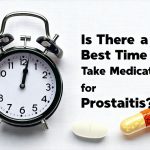Prostate cancer remains one of the most prevalent cancers affecting men worldwide, necessitating ongoing research into optimizing treatment strategies. While advancements in therapies have significantly improved outcomes, individual responses to medications can vary considerably. A growing body of evidence suggests that chronotherapy – timing medication administration based on biological rhythms – may play a crucial role in enhancing treatment efficacy and minimizing side effects for prostate cancer patients, particularly those undergoing androgen deprivation therapy (ADT). This concept acknowledges the inherent cyclical nature of many physiological processes, including hormone levels, immune function, and cellular repair mechanisms, all of which can impact drug absorption, metabolism, and ultimately, therapeutic outcomes.
Traditional approaches to medication often treat time as a neutral factor, assuming that dosage and frequency are the primary determinants of effectiveness. However, this overlooks the fact that our bodies aren’t static entities; they operate on internal clocks influenced by circadian rhythms, leading to fluctuations in various biological parameters throughout the day. Recognizing these inherent temporal variations opens up possibilities for tailoring treatment schedules to align with peak efficiency and reduced toxicity windows. The exploration of time-of-day sensitivity isn’t about replacing existing therapies, but rather refining them for personalized medicine and improved patient care.
Chronobiology & Androgen Deprivation Therapy (ADT)
Androgen deprivation therapy is a cornerstone in the treatment of prostate cancer, aiming to lower testosterone levels which fuel cancer growth. However, ADT frequently comes with significant side effects including fatigue, loss of libido, erectile dysfunction, hot flashes, and metabolic changes like increased risk of cardiovascular disease and osteoporosis. These side effects can profoundly impact quality of life, often leading to treatment discontinuation. The potential for chronotherapy lies in mitigating these adverse effects while maximizing the anti-cancer benefits of ADT. LHRH agonists (gonadotropin-releasing hormone agonists) are commonly used, suppressing testosterone production via a feedback loop and their effectiveness may be influenced by circadian timing.
The rationale behind time-of-day sensitivity in ADT stems from several factors. Firstly, cortisol levels – naturally peaking in the morning – can influence hormone regulation and potentially interfere with LHRH agonist efficacy if administered at that time. Secondly, testosterone itself exhibits a diurnal variation, typically being higher in the morning. Administering an LHRH agonist when testosterone is already low (e.g., evening or night) might lead to more efficient suppression. Thirdly, metabolic processes involved in drug clearance vary throughout the day, impacting how long the medication remains active in the body and influencing its overall effect. Research suggests that administering ADT medications at specific times could potentially reduce side effects by aligning with periods of lower cortisol levels and optimal hormone regulation.
Furthermore, understanding individual chronotypes – a person’s natural inclination towards being a “morning lark” or “night owl” – is critical. A patient’s chronotype can impact their response to medication timing, meaning that a one-size-fits-all approach won’t be effective. Personalized treatment schedules based on an individual’s circadian rhythm and chronotype hold promise for optimizing ADT efficacy and minimizing its adverse effects. Future studies are focusing on how to best integrate chronotype assessments into clinical practice alongside traditional prostate cancer staging and risk stratification.
Investigating the Optimal Timing of LHRH Agonists
Determining the optimal timing for administering LHRH agonists is a complex undertaking, requiring meticulous research methodologies. Initial studies have focused on comparing different administration times – morning versus evening – while monitoring hormone levels, side effect profiles, and treatment outcomes in prostate cancer patients undergoing ADT. These studies often involve collecting blood samples at regular intervals throughout the day to assess testosterone suppression and cortisol fluctuations. Statistical analyses are then performed to identify any significant correlations between timing of medication and patient response.
- Studies have shown that administering LHRH agonists in the evening may lead to greater initial testosterone suppression compared to morning administration, potentially due to lower baseline cortisol levels.
- However, maintaining long-term suppression requires consistent adherence to the prescribed schedule, regardless of time of day. The challenge lies in finding a balance between maximizing initial suppression and ensuring sustained hormone control.
Researchers are also exploring the use of actigraphy – wearing a small device that monitors movement patterns – to objectively assess circadian rhythms and identify individual chronotypes. This information can then be used to tailor ADT schedules to align with each patient’s unique biological clock. The goal is to move beyond simply prescribing medications at fixed times and towards personalized chronotherapy regimens optimized for maximum benefit.
The Role of Cortisol & Metabolic Function
Cortisol, often dubbed the “stress hormone,” plays a significant role in modulating various physiological processes, including immune function, inflammation, and glucose metabolism. Its natural diurnal rhythm – peaking in the morning and declining throughout the day – can influence how patients respond to ADT. Higher cortisol levels may counteract the testosterone-suppressing effects of LHRH agonists, potentially requiring higher doses or more frequent administrations. Conversely, administering ADT when cortisol is low (evening/night) could enhance its efficacy and reduce the need for aggressive dosing.
Metabolic function also exhibits circadian rhythms, impacting drug absorption, distribution, metabolism, and excretion. Enzymes involved in drug metabolism are often more active during specific times of day, influencing how quickly medications are processed by the body. Understanding these metabolic variations is crucial for optimizing ADT timing. – For example, if a key enzyme responsible for metabolizing an ADT medication is most active in the evening, administering the medication at that time could lead to faster clearance and potentially reduce its duration of action.
Research suggests that chronopharmacokinetics – studying how drug absorption and metabolism vary throughout the day – can help refine ADT schedules. By aligning medication timing with periods of optimal metabolic function, clinicians can aim to achieve consistent drug levels in the body and minimize side effects. This approach requires personalized assessment of metabolic profiles alongside circadian rhythm analysis.
Future Directions & Personalized Chronotherapy
The field of chronotherapy for prostate cancer is still evolving, but holds immense promise for improving treatment outcomes and quality of life. One key area of research is developing more sophisticated methods for assessing individual circadian rhythms and chronotypes. Wearable sensors – beyond actigraphy – are being developed to continuously monitor physiological parameters such as heart rate variability, sleep patterns, and body temperature, providing a more comprehensive understanding of an individual’s biological clock.
- Artificial intelligence (AI) and machine learning algorithms can analyze these data streams to predict optimal medication timing for each patient based on their unique characteristics.
- Pharmacogenomics – studying how genes influence drug response – will also play a crucial role in personalized chronotherapy, identifying genetic variations that affect metabolic processes and circadian rhythms.
Ultimately, the goal is to move towards individualized treatment plans that integrate chronobiological principles with traditional prostate cancer management strategies. This may involve developing customized ADT schedules based on patient chronotype, cortisol levels, metabolic profiles, and genetic predispositions. While challenges remain in translating this research into clinical practice, the potential benefits of time-of-day sensitivity in prostate medication response are significant and warrant continued investigation. The future of prostate cancer treatment may very well lie in harnessing the power of our internal clocks to optimize efficacy and minimize side effects for every patient.





















